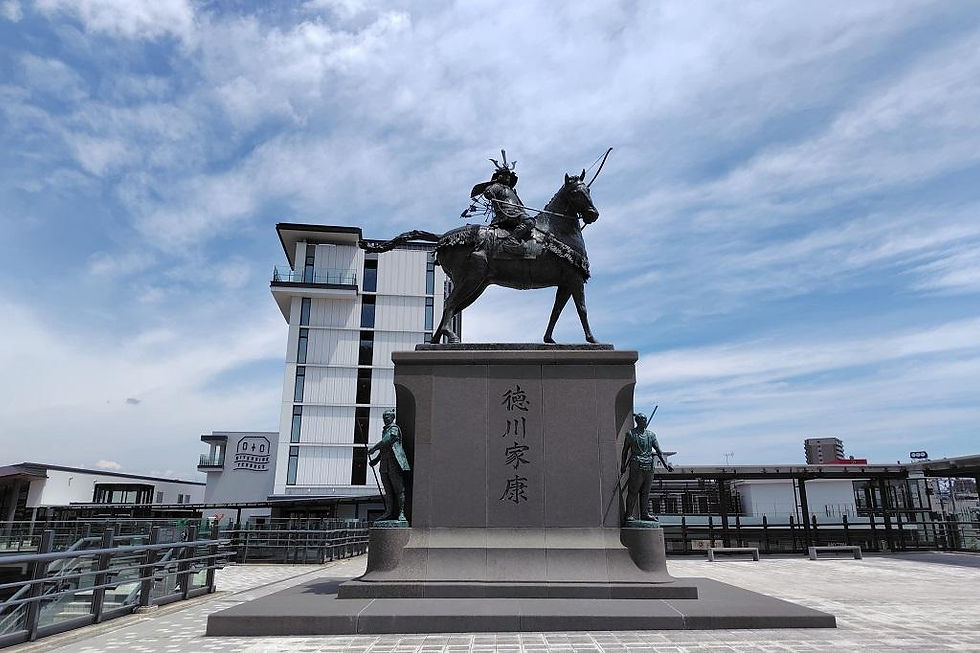First Seaborne Airstrikes in History
- Tony Boccia
- Sep 6
- 4 min read
This week we mark the anniversary of the very first seaborne airstrikes in history, which took place near Tsingtao, China, during the opening stages of the First World War. It has been claimed elsewhere that the first seaborne strikes took place on Christmas Day 1914 in Europe; this is not the case. Here's the backstory:
Japan, an ally of Britain since the establishment of the Anglo-Japanese Alliance in 1902, was a growing power in 1914. It had annexed Korea, Manchuria, Taiwan, and the Ryukyu Islands during its sprint toward modernity in the late Meiji and early Taisho Eras. As Britain dealt with the July Crisis and faced the near-certainty of joining a general European war to defend its overseas interests, the proximity of hostile forces to these territories came into sharp focus. Namely, this was the German High Seas Fleet, homeported in Tsingtao (now Qingdao) in northeastern China. The heavy cruisers Sharnhorst and Emden, along with the other capable ships of the fleet homeported here, could wreak havoc on British colonies and trade routes in the South China Sea and Indian Ocean. The Admiralty in London was hyper-focused on this threat.

In fact, Admiral Graf von Spee, leader of the German High Seas Fleet, had recalled his force in the Marianas when war was declared on Germany; the various ships had been scattered across German-held Micronesia on routine missions during the July Crisis. The fleet resupplied at Guam and then split up, with the SMS Emden making for Germany through the Indian Ocean, and the rest steaming for the Atlantic via Cape Horn. All of this was completely unknown to the British; and so they finally made the decision on the 7th of August, 1914 to call on help from Japan to neutralize the port at Tsingtao and the German forces there.
The Japanese issued an ultimatum to cede Tsingtao and disperse the fleet to the German Empire on the 15th of August, and when it went unanswered, declared war on the 23rd. The Imperial Japanese Navy sent its Second Fleet under Vice-Admiral Kato Sadakichi to blockade the port and prevent any resupply of the city by sea. Admiral Kato flew his flag in Suwo, a pre-dreadnought battleship captured during the Russo-Japanese War. Included in his fleet of battlecruisers, pre-dreadnoughts, and other combatants was Wakamiya, a seaplane carrier that would go on to make two notable firsts during the Siege of Tsingtao.

Wakamiya had been laid down in 1901 in Belfast, Ireland, as a freighter destined for Russian service named the Lethington. Captured off Shimane Prefecture in the Sea of Japan during the Russo-Japanese War, she was taken by the Japanese government and sold to NYK under the name Wakamiya Maru. The ship was requisitioned by the Imperial Japanese Navy in 1913, being then converted to a seaplane carrier that sported two aircraft on deck, and two in reserve. Upon loading ordnance, the aicraft were then lowered into the sea by the ship's cranes for launching and landing. The aircraft provided either close air support or reconnaissance, and then returned to the Wakamiya for reloading.
On the 5th of September 1914, a Japanese-piloted Farman MF.11 took off in such a way, headed for the Austro-Hungarian battleship SMS Kairserin Elisabeth and a German gunboat. While neither ship was hit by the aircraft's ordnance, this constitutes the first seaborne air strike in history. Throughout the campaign, Wakamiya launched 49 sorties, including the first nighttime seaborne air strikes, delivering 190 bombs on targets throughout Tsingtao.

Just prior to the Wakamiya's notable first, Imperial Japanese Army troops of the 18th Division (some 23,000 men) landed at Lungkow, and again at Lau Schan Bay on the 18th of September. The Siege of Tsingtao started on the 31st of October and ended on the 6th of November 1914. The German and Austro-Hungarian forces were completely overwhelmed in numbers and ability by the Japanese, and surrendered with a loss of 200 killed. The city then fell into Japanese hands, where it remained until 1922.
Removing the German East Asia Squadron from the Pacific was a Pyrrhic Victory of sorts for the British. Tied down as they were in Flanders and the Middle East, they could only stand by as Japan added yet another strategic port to its empire, along with the German colonies scattered across Micronesia and the Central Pacific. The victory gave the Japanese even more reason to continue expanding in China, militarily, economically and politically, which in turn emboldened Chinese leaders such as Sun Yat-Sen and Yuan Shikai to unite China and push the foreign powers out in the inter-war years. Wakamiya and the first seaborne airstrikes have largely been lost in the larger story of Japanese expansion in China in the 20th century; however these notable firsts should not be discounted, not least for their role in accelerating the outbreak of the Chinese Civil War, Sino-Japanese War, and Second World War.




Comments